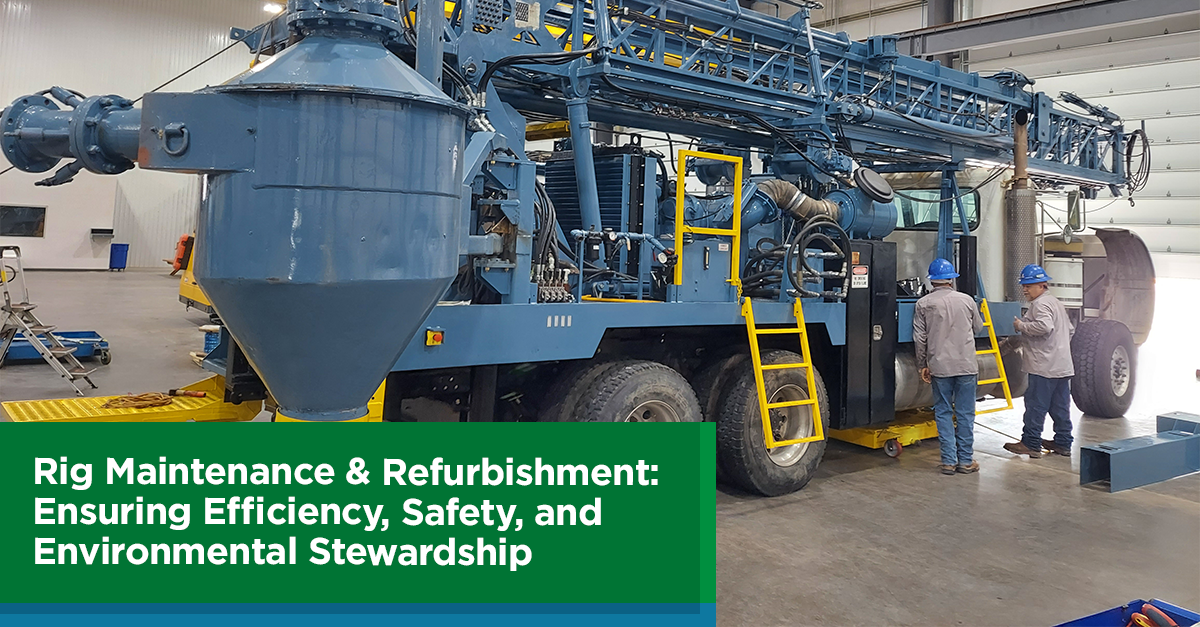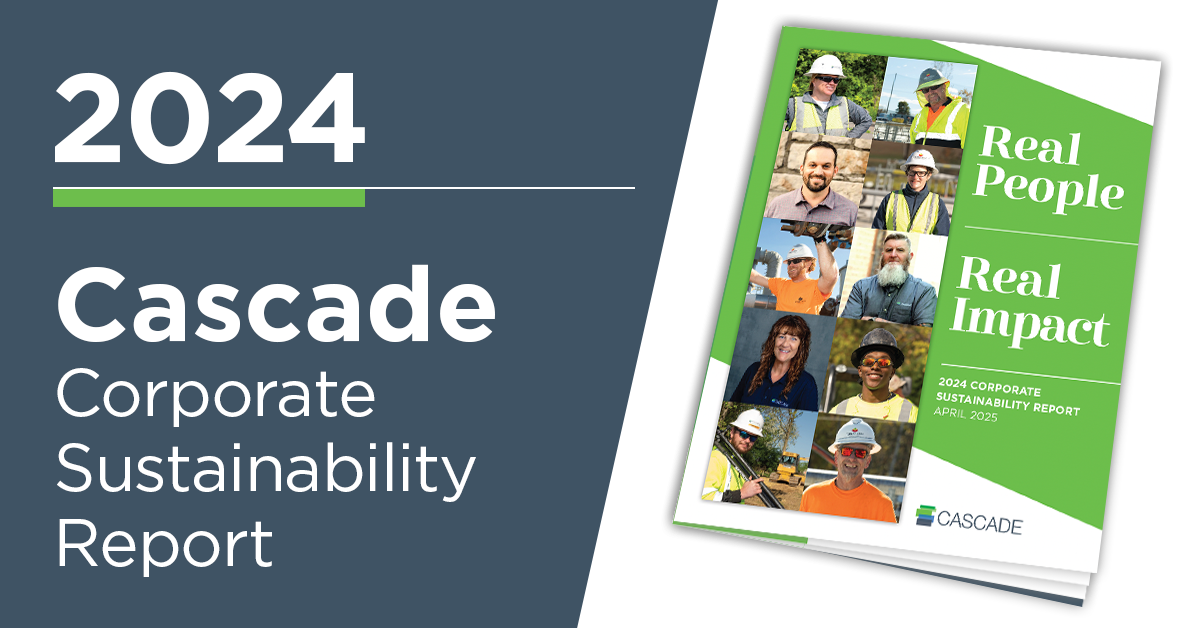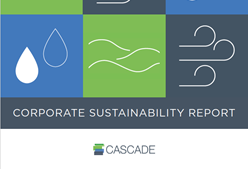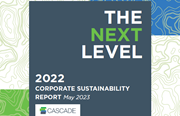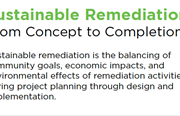3 Competitive Advantages of Sustainable Remediation
By: Sue BruningIs sustainable remediation a waste of time, or does it really provide a competitive advantage?
Because no matter how much you value the idea of sustainability, if it doesn’t help your company and client’s bottom line, it’s unlikely your project plan will make the cut.
Luckily, the answer to that question is a resounding, unequivocal “absolutely!”
Sustainable remediation isn’t just about finding the “greenest” solution (whatever that actually means)—it’s about balancing community goals, economic impacts, and environmental effects of remediation activities during project planning through design and implementation. Decision makers consider environmental, social, and economic factors throughout the project lifecycle. Everything from site investigation technologies and remedy selection to job materials and crew activities are specified based on the ability to lessen negative effects of the cleanup, protect human health and the environment while adhering to regulatory objectives.
If you’d like a deep dive into this topic, you can watch our on-demand webinar, Incorporating Sustainability and Resiliency Into Your Remediation Projects.
In this blog post, we’ll look at three ways that sustainable remediation provides a competitive advantage for environmental consultants.
#1: Demonstrated Qualification
Sustainability is a goal for organizations in both the public and private sectors. The investment management company Blackrock recently projected that environmental, social and governance (ESG) investments could become a $1 trillion category by 2030. The U.S. Army Corp of Engineers announced $1.8 billion projected obligations for environmental cleanup and environmental quality projects in fiscal year 2021, with an emphasis on “proving sustainable solutions to address short and long-term environmental, social, and economic considerations.”
Consultants with successful track records have a better chance to qualify for these bidding opportunities, and firms with their own sustainability initiatives and transparent reporting stand out in a crowded field. It’s reasonable to believe sustainability metrics may soon become a standard pre-bid qualification hurdle, much like your safety record and financial stability are today.
#2: Proven Technology Leadership & Innovation
Industry standards and best management practices to achieve sustainability goals provide guidance on utilizing specific technologies like high resolution site characterization and a combined remedy approach to efficiently and effectively target contaminant zones. These standards also include material aspects such as stakeholder engagement, social impact, and economic impact to the local community.
The Interstate Technology Regulatory Council (ITRC) issued Green and Sustainable Remediation: A Practical Framework in 2011, which offered an approach that optimizes all phases of site remediation, from site investigation to project closeout with consideration of environmental, social, and economic impacts. The EPA released Methodology for Understanding and Reducing a Project’s Environmental Footprint in 2012. ASTM followed with its Standard Guide for Greener Cleanups (E2893) in 2013, and seven years later with the Standard Guide for Integrating Sustainable Objectives into Cleanup (E2876). ISO published its ISO 18504:2017 Soil quality — Sustainable remediation in 2017.
Resources and scholarly articles for understanding and implementing sustainable remediation have grown substantially in the last decade. However, there isn’t much data out there on field implementation. Sustainable remediation is still in the innovator and early adopter stages of the technology adoption curve, making it ripe for competitive advantage.
#3: Concrete Long-Term ROI
Full implementation of one or more of these standards and best practices may require additional staff time for planning, supply chain evaluation and stakeholder engagement prior to putting that first shovel (or drill rig) in the ground. Site characterization and remedy implementation may also have a higher upfront cost. However, understanding the standards and being able to implement them offers a premium return on investment for the overall project. The returns on each are measured by improved human health, positive environmental impacts, community involvement, risk mitigation, effective long-term remedy performance, and your professional reputation.
The Sustainable Remediation Forum’s (SURF) whitepaper, “Integrating Sustainable Principles, Practices, and Metrics Into Remediation Projects,” details the cost-benefit analysis approach:
“Although short-term costs may be higher, and because sustainable remediation is likely to emphasize innovative technologies, potential long-term cost savings must be balanced against increased short-term costs. In fact, sustainable remediation is likely to result in long-term savings because the remedies are more likely to yield long-term benefits. Furthermore, the remedies themselves may be less expensive than conventional approaches. Apart from long-term cost savings, sustainable remediation also is likely to enhance the public image of the business and, therefore, avoid future enforcement initiatives.”
As the science and technology of site characterization and remediation has advanced, so too has the process for evaluating the life cycle cost of the project. A multi-factor approach referred to as Return on Remediation Investment (RORI) accounts for the cost of site characterization, remediation, transition assessment, and the site’s long-term management with respect to the design volume and actual volume of contaminants removed. The RORI multi-factor approach to environmental remediation shows us that maximizing the long-term return for remediation of complex sites requires:
- Collecting the right type and quantity of characterization data
- Carefully selecting the appropriate remedy(ies) based on bench and design optimization testing
- Applying best practices to implement remedies
- Monitoring for the right type and quantity of performance data
For more insight on utilizing the RORI approach for complex sites, check out our previous series, How to Apply the Return on Remediation Investment Approach to Complex Chlorinated Solvent Sites. Part one summarizes the RORI approach for complex sites involving chlorinated solvents prior to the transition to long-term management. Part two dives into the practice of combined remedies to achieve maximum results for remediation of chlorinated sites.
Get in the Game
Sustainability practices have traction and are building momentum in client segments across the board. If you understand how to implement sustainability practices and communicate the results through recognized standards and frameworks, you’ll have earned a competitive advantage that will help you bid on and book more work.
Want to learn more about sustainable practices for remediation projects? Watch our webinar, Incorporating Sustainability and Resiliency in Your Remediation Projects, where panelists discuss ways to address aspects of sustainability throughout the project lifecycle.
About the Author

Sue Bruning
VP Marketing & Communications
[email protected]
Sue Bruning is the Vice President of Marketing & Communications at Cascade and serves as Chair of Cascade’s Sustainability Council. She earned a bachelor’s degree in Environmental Health, a master’s in Business Administration, and is certified in the Global Reporting Initiative’s Sustainability Reporting Process. If you would like to connect with Sue about her experience with marketing, communications, strategic planning, or sustainability, you can find her on LinkedIn.

